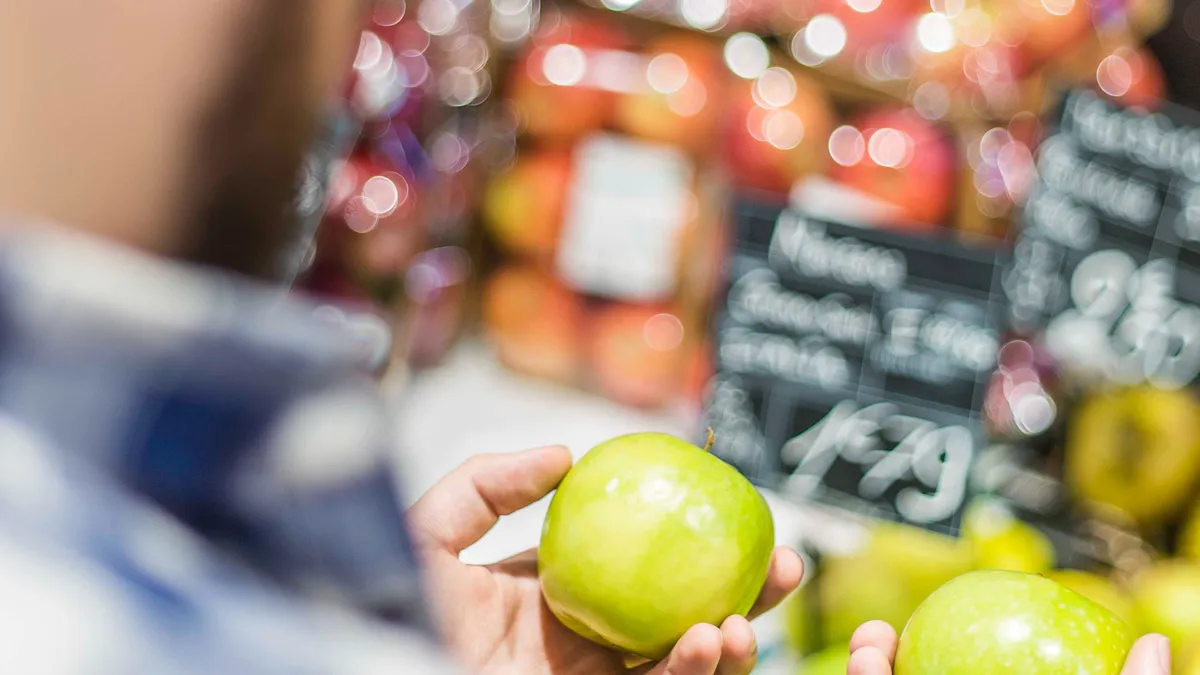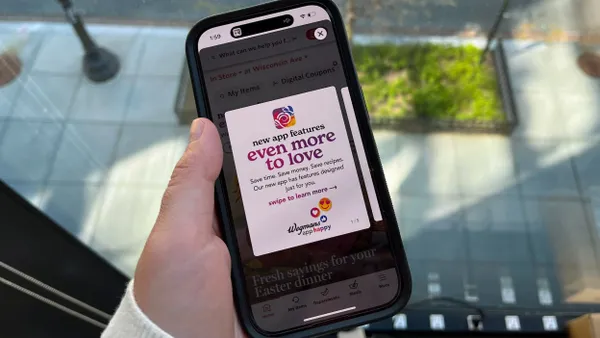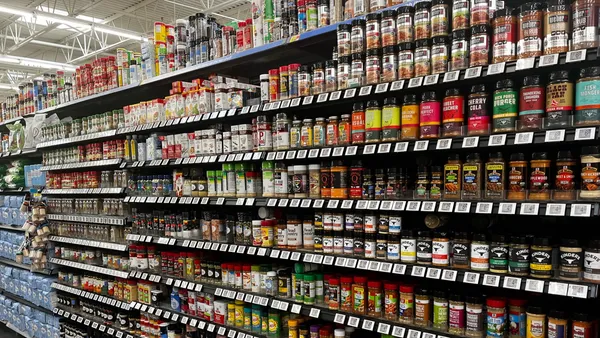Dive Brief:
- While 75% of consumers will stay longer in stores that take advantage of music, visuals and scent, 90% percent feel more inclined to revisit those stores that create an enjoyable sensory experience, according to a Mood Media and Walnut Unlimited survey. A store’s music selection positively affects 85% of shoppers, but more than half will disengage if they deem music ill-fitting for the setting, too loud or otherwise unenjoyable.
- The solutions and market research companies conducted 15-minute in-person surveys of more than 10,000 consumers — split nearly evenly male to female — in 10 countries, gauging the impact of audio, visual, tactile and scent stimuli in retail on perceptions and behavior. Eight in 10 would recommend a store with enjoyable sensory experiences, with 78% citing atmosphere as a key factor in choosing to shop in-store versus online.
- Video also plays a significant role for 58% of consumers, especially for promoting in-store specials, product or service information and recommendations. Notably, 1 in 2 Generation-Z shoppers say video and digital content has influenced their buying decision in-store.
Dive Insight:
As consumers are increasingly test buying groceries online, retailers have refocused their strategies to improve the in-store experience. Their efforts have paid off in recent years, as 86% of consumers are likely to have visited a brick-and-mortar store in the past 30 days, found a 2017 Hartman Group survey. In August Progressive Grocer also pointed to the success of stores that provide a multi-faceted sensory experience with sights, sounds and smells — an experience that engages customers in ways impossible to achieve through a computer screen.
More than half of shoppers surveyed by Mood Media said they would be more likely to buy something after touching, feeling or trying it. Likewise, finding a personalized experience in stores pushed nearly 40% to say yes to a product.
Grocers have noted those very human desires by altering store layouts to bring fresher, healthier foods to the forefront, for instance, or adding “sip and serve” bars for customers to unwind or stroll through the store with a beer in hand. These amenities lead shoppers to a more fulfilling experience, rather than a simple transaction.
According to a 2017 Morgan Stanley survey, 84% of consumers said they didn’t shop for groceries online because they wanted to see and touch their selections, especially produce. Stores also have the opportunity to educate consumers or offer personal attention that e-commerce lacks — whether through well-trained butchers behind the meat counter, a staff sommelier for wine advice, or culinary instructors teaching cooking demos and handing out samples.
Consumers, for their part, have discovered some of supermarkets’ time-honored ploys to keep them in stores longer, such as plopping milk farthest from the door, or teasing them down an aisle they might otherwise skip.
Music plays an important role in how quickly or methodically customers navigate stores. Ronald E. Milliman’s 1982 study about background music in supermarkets revealed that downtempo music slows people down and increases sales, whereas faster beats encourage a quicker pace and smaller receipts. Mode, meaning upbeat songs in major keys versus more melodic minor compositions, also fostered sales. In fact, sales volume jumped 38% when stores played background music. Though the definition of “enjoyable” or “unfitting” tunes remains subjective, Mood’s survey reinforces the importance of the unseen factors hitting shoppers’ subconscious.
Signage has also matured, with stores exploring LED displays to swap out deals quickly and cheaply. A majority of shoppers connect with what Mood calls “engaging video content,” soaking in product promotions or perhaps a unique service the store offers, such as prescription savings clubs or staff nutritionists. Kroger, for instance, launched digital shelf pricing at around 200 stores, opening an entirely new channel for on-demand price changes and flash sales.












